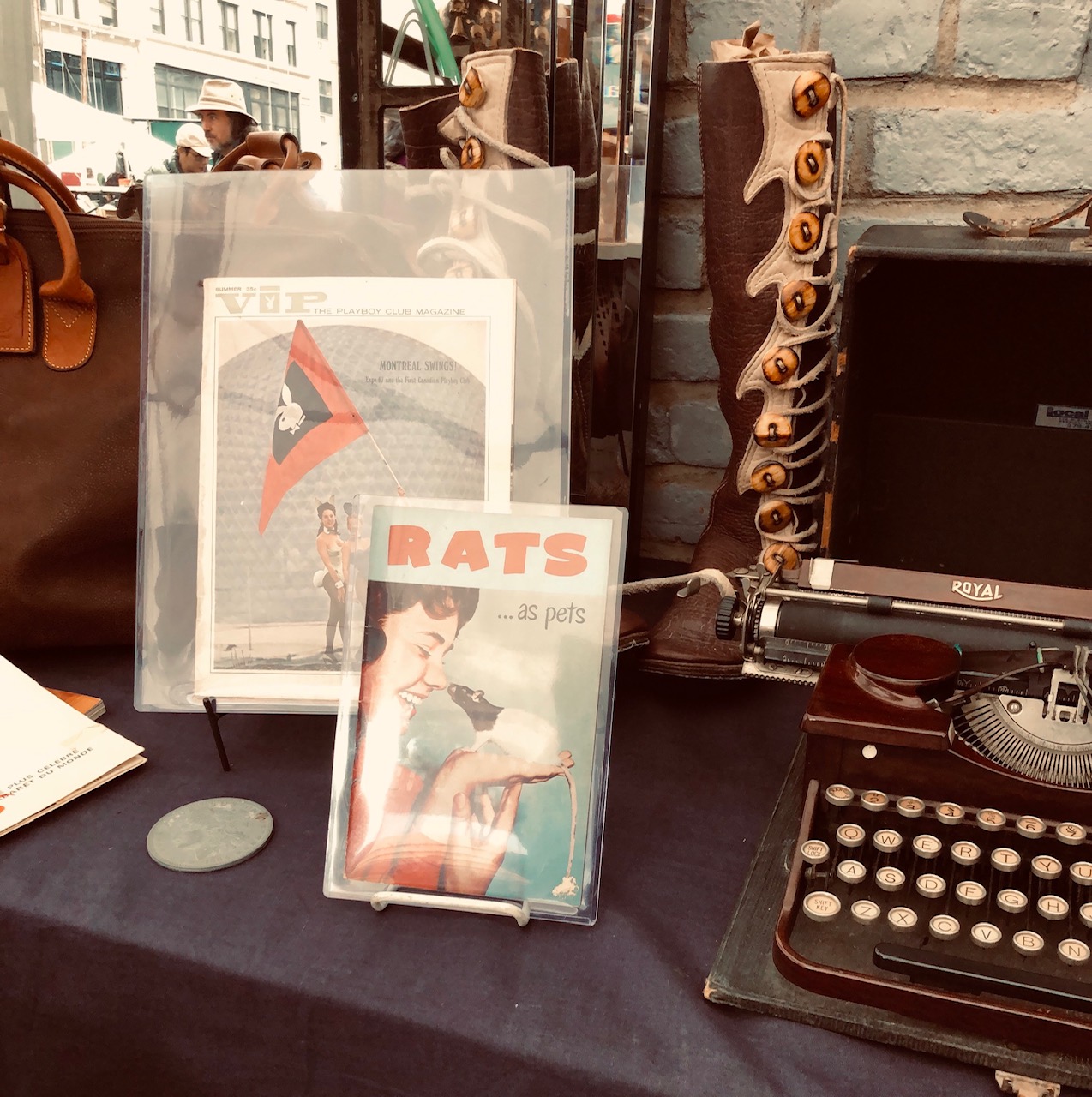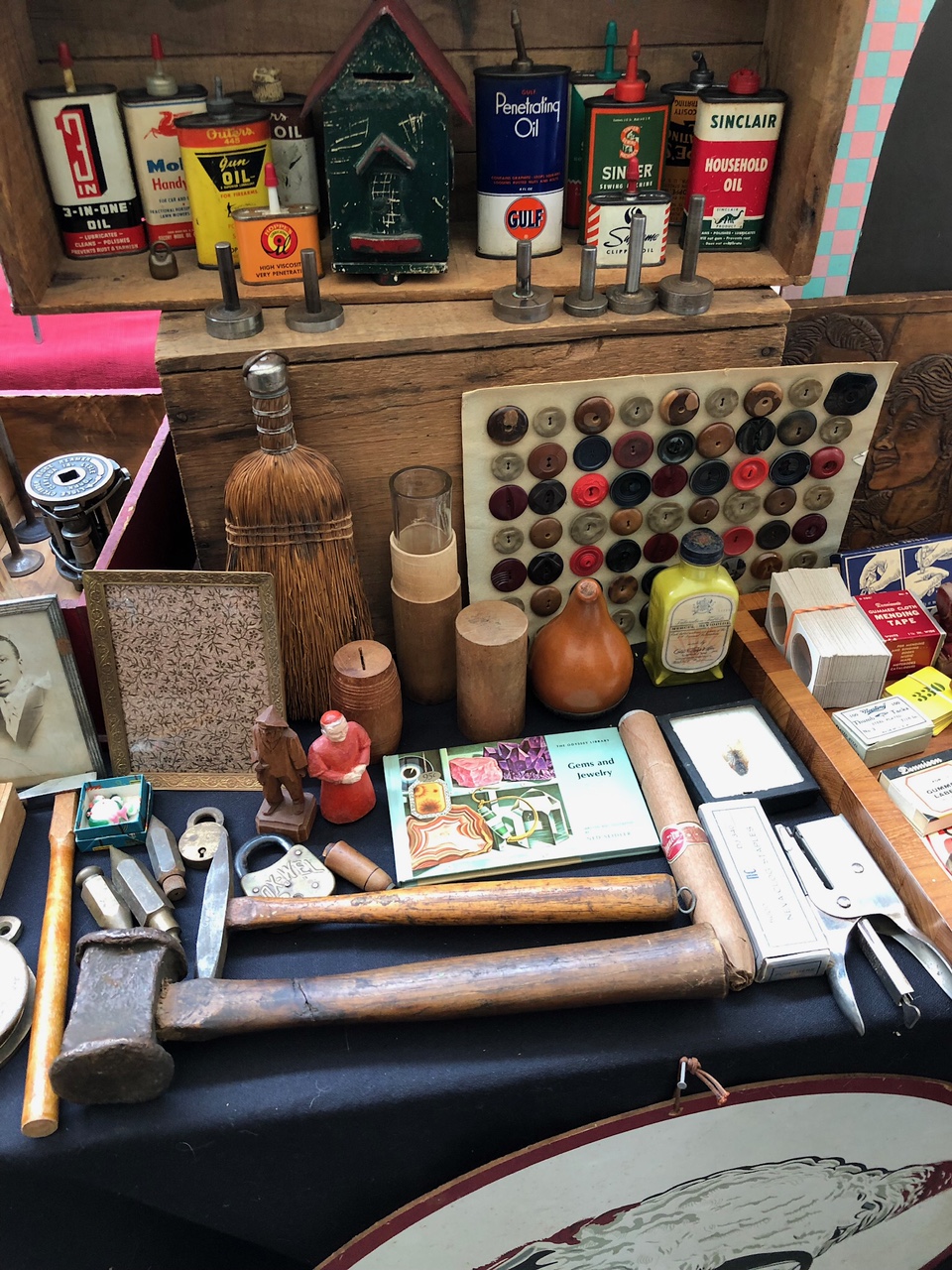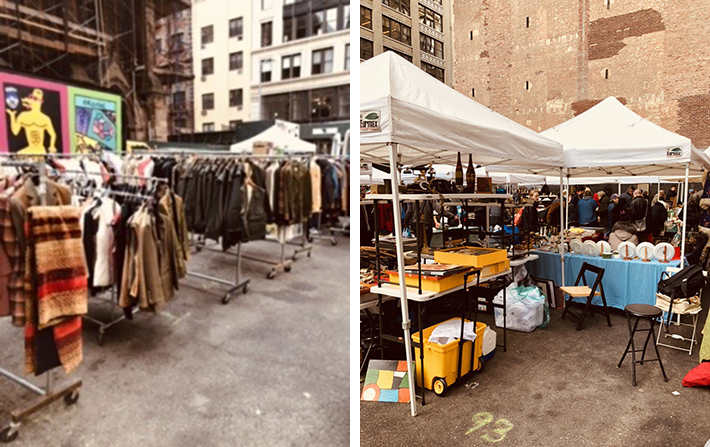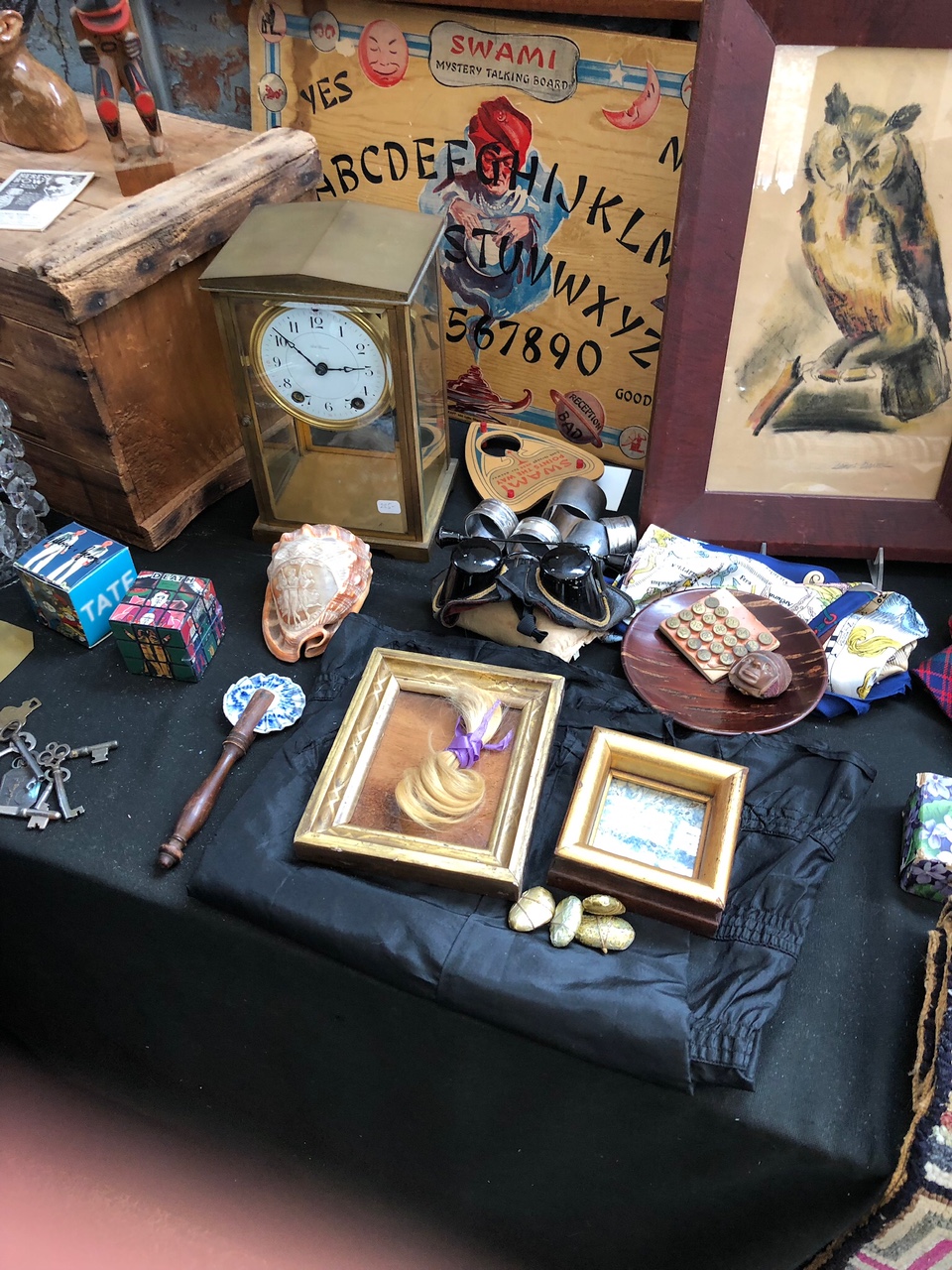
The last day of the Annex flea Market on December 30, 2020.
It is Sunday; frigid as a Russian winter; gray as a herringbone suit. Here at the recently reconstituted New York City Nomad outdoor flea market (it closed before the shutdown) I am freezing my patootie off. Admission used to cost a dollar, now it is free. Good price. But there is nothing of interest anymore. The good dealers have moved online. What remains are more or less dregs, abundant loads of jewelry, baseball and Pokomon cards, middling comic books, and eight-track cassettes. The days of stumbling upon hidden treasures – like an original copy of Jan Tschichold’s The New Typography — are long over and the thrill of collecting all the (once) ignored graphic design rarities is sadly gone.
The thrill of the hunt has been replaced by the ease of Ebay and Etsy. The joy of the browse is now a trudge through a recent spate of online book fairs (clever but not satisfying to me). Dealers who used to set up bountiful tables filled with flotsam, jetsam, and treasure now post their offerings a few at a time and collectors need only press a reply button (to find that someone got to it before you).
Then there is a skyrocketing number of graphic design collectors and collections — again online.

Designers have always collected artifacts as inspiration and aspiration. Like archeologists, happily and determinedly they dug through boxes, cases and shelves of “stuff” searching for the known and unknown. It was a civilized, if a semi-scientific, pursuit. Today, gone is the sense of discovery replaced, in part, by the contentment of not leaving the Eames chair. So many design history and collectors’ books (and I include some of my own) have become aggregations of artifacts that are comparatively easier to find than years ago, and they have precipitously increased in price because they are seen as valuable online.
Pinterest and Instagram are democratic ways to share historically relevant, if decontextualized, objects, but these produce a glut — too many people are privy to the same things. Rarity is tied to value, which is tied to exclusivity. Arguably, graphic design and design related materials should be available to all scholars, but the digital paper chase lacks imagination.

While a scavenger may very well stumble across a revelatory piece of work, the odds are that many other people will find it to. I recall years ago I had found a dealer of graphic design books and magazines at the more expansive (now gone) Sixth Avenue fleas (in both parking lot and garage). I’d go to see him every weekend at which time I’d fill large bags with rather inexpensive but historically valuable materials. The stock never seemed to dwindle. There were indeed others who collected what I wanted (and on occasion someone else would beat me to a coveted magazine or poster), but there was always enough stuff on hand to constitute a satisfying outing. I amassed fabulous riches that became the foundation for the design histories and essays that I write.
Today, archives are the rage. Now, don’t misunderstand, I greatly advocate for well organized, contextualized, curated, and catalogued archives and libraries. They are essential to maintaining the heritage of the field and its practitioners. But I go selfishly nuts when I see the abundance of “my” material online. One can argue this unfettered collection of viewable documents is a boon to a growing number of design history scholars. But I cannot control my hoarding envy.

When it comes right down to it, the act of collecting, whether it is multimillion dollar artworks or considerably less expensive but nonetheless pricey ephemera, is a competitive sport. Auctions, for example, are highly competitive and strategic. I ‘m fine with the competition but I prefer it with less players — and even more, prefer to win.
There, I admit it, I do not collect purely for the love of creating historical narratives and providing the world with new insights. I do it as much because the act of tracking down forgotten, unknown, and rare artifacts is challenging and fun. With so many more challengers, who invariably show off their treasures on online display platforms, the act may still be challenging, but not as engaging (at least for me) in the digital age.

